How to choose a washing machine: to compare types, their characteristics and peculiarities
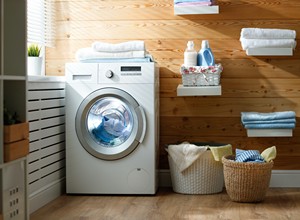 Although the choice and purchase of a washing machine theoretically seems to be a simple task, it has nuances that many consumers ignore.
Although the choice and purchase of a washing machine theoretically seems to be a simple task, it has nuances that many consumers ignore.
The main thing is to understand the criteria, which should be taken into account even at the stage of considering the available offers.
And that is why it is not always preferable to buy the most expensive washing machine!
So how to choose the right washing machine?
Contents .
Washing machine variations
Conventionally, all washing machines are divided into 3 large groups:
- Non-automatic (activator). The simplest and cheapest. They also have one great advantage: they take up minimal space and are relatively lightweight. This may be important for those who do not have their own home and often change places of residence. To transport such a washing machine you do not need to order specialized transport. Of the disadvantages: you need to independently perform the spin, as well as drain the water, wash the drum (not rotating) from the remains of dirty water, detergent.
- Automatic with front-loading. Today - the most common. These are the same washing machines that have a round hatch and horizontally placed drum. Of the advantages: manufacturers emphasize such washing machines. Therefore, they have the widest functionality, all the innovations. And they also have a load distribution on the drum evenly, they make less noise during operation or spinning.
- Automatic with vertical loading. In terms of functionality, as a rule, they are slightly inferior to the front ones. But they have one major advantage - they take up less space (due to the greater height).
About 85% of all buyers in 2021-2022 will consider buying only automatic washing machines.
They cost more, but they do most of the laundry. Essentially, you'll only need to load the laundry, add detergent, and when finished, hang the clothes out to dry.
Front-loading .
Their main advantage is a more even load on the drum as it rotates. And the excessive vibration is compensated by means of a loader installed on top, as well as shock absorbers located in the lower part of the drum.
Therefore, the impact on the body is minimal. And due to this, they make minimal noise during operation, even during spinning.
An additional advantage of front washing machines is an attractive external design. They fit into almost any interior.
That is why in the CIS countries they can be placed both in the bathroom (for example, under the sink) and in the kitchen or even in the living room. It affects only where there is free space for installation.
Most of the production of modern concerns are also focused on front-loading washing machines. And that is why all the new and innovative features can be found in such washing machines.
In others, they appear only after 3 to 5 years.
Another advantage of front-loading washing machines is the possibility of making them narrower in width.
Yes, this reduces the allowable loading capacity of clothes, but such a washing machine can be placed literally even in combined bathrooms (which are still commonplace in the CIS).
Vertical .
Occupies a smaller total area than the front. But it is impossible to make them narrow, because the drum must necessarily be balanced.
Additional advantages of such washing machines:
- Fail less often, as structurally a little simpler than the front ones. For example, they do not have a hatch and a lock closing sensor. And also there is no need to install a sealing collar in front of the drum to prevent water leakage.
- More roomy in their size.
- Almost all washing machines with vertical loading have an ironing (drying) function. There is no need to install an additional heating element for this purpose, it is enough to use the existing one and rotate the drum at low speed at this time.
Built-in or freestanding
Also washing machines with front-loading are divided into:
- Built-in.
- Freestanding.
Built-in .
Installed directly in the niche allocated for this purpose. Allow you to save space, and install all the equipment in a single overall design.
But these washing machines are more expensive in most cases. Also, to install them you will need to seek help from outside experts.
And there can be complications with their maintenance (for example, if you need to replace the drive belt or the inlet valve).
Have only the front decorative insert (in the back, as a rule, there is only a sealed box and holding brackets for the pump, motor, shock absorbers).
Today, built-in washing machines are mostly used in commercial laundries (where there is limited space available for placement of equipment).
Freestanding .
The preferred option for most consumers.
Technically they differ from the built-in ones only by the presence of a decorative body. And they have a smaller drum size.
Narrow and full-size
There are several typical sizes of front-loading washing machines:
- Standard. With a height of about 85 - 90 centimeters, depth - in the range of 45 to 60 centimeters. Allow you to load up to 6.5 kilograms of laundry for washing.
- Narrow. The height is similar: about 85 - 90 centimeters. But the depth is up to 45 centimeters.
- Non-standard. We are talking about those washing machines, the dimensions of which differ from the above. Most manufacturers have two to three such models.
Basic programs of washing machines
The general set of washing programs of all washing machines is about the same:
- washing wool products;
- cotton;
- synthetics;
- prewash;
- quick wash;
- daily wash;
- intensive;
- handwash;
- delicate.
Washing wool items
Performed in warm water, but as gently as possible, and with an additional rinse (to wash away detergent residue, since wool clothes work as a "sponge").
Cotton
One of the most versatile modes for washing. Can be used as an everyday wash.
The temperature is up to 95 degrees, spin at maximum speed.
Takes an average of 60-90 minutes. For comparison, the washing of wool is carried out up to 3 hours.
Synthetics
Things made of synthetics are resistant to wear and tear, but they do not withstand the impact of high temperatures.
Therefore, the washing machine runs at maximum speed, but the water heating - only to 60 degrees.
Prewash
When you turn on this program starts 2 consecutive cycles of washing, so it takes a really long time (3.5 - 4 hours).
It is recommended to use it for clothes with the most stubborn stains, when you cannot get rid of them in the normal mode.
A little more powder or gel should be added to the detergent compartment than usual. During the washing process, it is fed gradually into the drum (in portions, not all at once).
Quick wash
The shortest program, suitable for washing lightly soiled items. Heating water to a minimum - only 30 - 40 degrees.
After the end of the included spin at maximum speed. The entire cycle takes an average of 45 - 70 minutes.
Daily Washing
A similar option to the fast wash, but takes a little longer.
In some washers from the rapid differs only with an additional cycle of rinsing and spinning, in order to completely wash out the remaining detergent.
Intense
Designed for very dirty things.
The speed of both washing and spinning - the maximum. The heating temperature is up to 90 degrees, the detergent consumption is high.
By default, many washing machines also include a pre-soak program in cold water. Therefore, the entire cycle takes, on average, more than 2 hours.
Manual
This program is best suited for washing fabrics that require careful handling. For example, curtains, tulle, wedding dresses.
Revolutions are minimal, the temperature does not exceed 40 degrees, detergent is used in portions, includes an additional rinse.
The wringing of many manufacturers is switched on by default or at the lowest speed, or does not engage at all.
Delicate
It is an analogue of the manual mode. The key difference is the use of spinning at normal speed (400 - 600).
Otherwise, the same temperature settings, the same number of drum rotation cycles.
Additional modes
Nowadays, manufacturers mostly compete with each other by adding new unique washing modes.
The following can often be found:
- ECO;
- Cold water wash;
- overnight;
- silk;
- for children's clothes;
- bio-care;
- stubborn stain removal;
- boiling;
- drying;
- extra rinse.
ECO
The key difference is the minimum power consumption.
Therefore, the washing cycle starts at a temperature of only 30 degrees, takes up to 40 - 60 minutes. Revolutions - minimum or medium (for spinning - too).
If we believe the statements of the manufacturers themselves, this mode allows you to save about 30 - 40% of the electricity consumed.
Washing in cold water
It is used for delicate fabrics, which are forbidden to wash in water over 40 degrees, and at the same time there are no resistant to removal of stains.
Overnight
A longer cycle, but always on low speed.
The main difference is the minimum noise produced in the process.
Silk
Option for combined fabrics, which include both natural and synthetic.
The temperature is medium (up to 60 degrees), revolutions - too.
For children's clothes
Minimum detergent consumption, high temperature, a few extra rinse cycles. Spinning at a medium speed.
It turns out relatively delicate treatment of fabrics, but with the removal of stubborn stains, which on children's clothes - a common phenomenon.
Biohome
Starts two independent washing cycles. The first on low temperature, the second on high.
Suitable for heavily soiled clothes, and at the same time provides delicate care.
Removing stubborn stains
This mode allows you to pre-soak in water at a high temperature and with a small amount of detergent.
Allows to get rid of those stains where the other modes have proved helpless.
Boiling
Soaking in water at maximum temperature.
Best for washing linens and removing yellowing.
Drying
After the wash is finished, items are heated with a heating element.
Allows faster drying, but uses more electricity (about 25%).
Extra rinse
At the end of the wash cycle, another rinse cycle is initiated to remove any detergent residue from the garments.
Recommended when washing woolen, dense, and children's items.
Additional useful features
Really useful for many may be the following functions in the washing machine:
- Drum cleaning function.
- Lock control.
- Delayed start (timer).
Drum cleaning.
One of the first manufacturers from LG added this function to their washing machines.
When starting this program, several cycles of rapid water intake and discharge are performed alternately, along with a rapid rotation of the drum. Allows you to wash out all insoluble fractions: rust, sand, hair.
Before starting this program, it is recommended to pre-clean the filter (to prevent the formation of clogs).
As a rule, it is started with a combination of "Intensive" and "Extra rinse" buttons (hold for 3 seconds or more).
Control lock
A useful feature for those cases where small children live in the house, who may accidentally stop the washing or start the forced drain, spin.
With combinations of keys, you can temporarily lock the control with the buttons (until they are pressed again). As a rule, select those keys that cannot be pressed accidentally.
Delayed start (timer)
Many of the washing programs take 2 - 3 hours. And at the end of it, the things must be hung by hand.
What happens if the clothes are in the drum for 5 - 6 hours? Excessive moisture inside the machine housing can accelerate the wear of the same belt or control unit (oxide will start to appear).
And for such cases, the delayed start function is used. That is, a timer is set, at the end of which the machine automatically starts the washing in a user-specified mode.
You can turn on the washing machine, for example, before leaving for work. The washing will start at about 2 - 3 pm, and when you return home, the cycle will just be completed. The only thing left to do is to hang the items up.
Do you need a laundry drying cycle?
The drying mode is to shower clothes with a stream of hot air after the main wash cycle is finished.
As a rule, an additional heating element is installed in washing machines for this purpose.
Is this mode really necessary? Its main advantage is a faster drying of the clothes. Also after the machine drying it is easier to iron the clothes.
But there are also quite a few disadvantages:
- The clothes may be wrinkled after drying. This problem is especially common in older washing machines, where this mode was not yet developed.
- Suitable only for heat-resistant materials. And this is not synthetic, and cotton is not always recommended to succumb to such a treatment.
- Washing and drying machines take up more space.
- Washing machines with a drying mode cost a little more.
There are no additional advantages in the presence of this mode. But in expensive washing machines it is installed by default.
What company to choose a washing machine
If you focus directly on the reviews of consumers themselves, as well as technical experts, it is possible to identify the following most popular brands of washing machines:
- Samsung. Relatively inexpensive and reliable. Also, this manufacturer has the largest number of programs. They were among the first to put into mass production washing machines with heaters, which have a ceramic coating, resistant to scale formation.
- LG. Recently, a smaller range of models is supplied to the CIS. But one of the main advantages is the reliability of such equipment. As a rule, LG washing machines have a warranty of up to 3 years, and the heating element - up to 5 years. None of the other manufacturers can boast of a similar "offer".
- Bosch. It belongs to the medium budget and expensive categories of home appliances. They have the most reliable motors, there is no saving on any parts. But with the repair of such washing machines are often difficult, to get the spare parts is also quite difficult.
- Electrolux. They are one of the best-selling washing machines in Eastern Europe (if you believe the official statistics, provided by the manufacturers themselves). It is quite possible that this is due to the location of the main mass of production facilities for washing machines in these countries. Among the advantages is the low cost with a good set of features.
- Weissgauff. This is not the most popular German brand, but it has been manufacturing equipment for over 50 years. A distinctive feature is the observance of the so-called "green standards". That is, these washing machines consume a minimum of electricity, provide a thorough rinse of detergent residues.
Top 5 washing machines according to buyers
According to the rating of most popular retailers and online stores, it is possible to identify the following models of washing machines, which consumers rated as the best combination of price and quality:
- Samsung WF8590NLW9;
- LG F1096ND3;
- Bosch WGA242X4OE;
- Electrolux PerfectCare 600 EW6S4R06W;
- Weissgauff WM 40275 TD.
Samsung WF8590NLW9
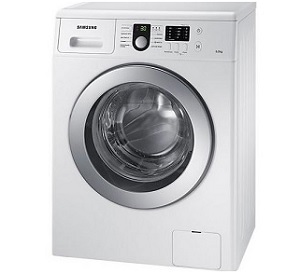
Standard size, load up to 6 kilograms.
There is a foam level control function, as well as several additional modes for delicate and quiet washing.
Of the additional features: ceramic heater, drum balancing sensor, removable top cover.
Of the disadvantages: sometimes "hangs", but after resetting the washing starts in normal mode.
LG F1096ND3.
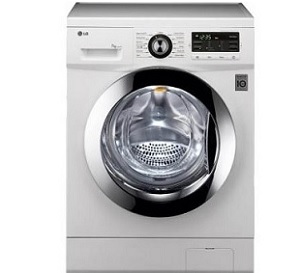
Of the advantages: the minimum noise at work, there is a hose to drain water when cleaning the filter.
From the disadvantages of buyers mention only the incorrect operation of the button "Cancel mode" - it does not work in all programs.
Bosch WGA242X4OE
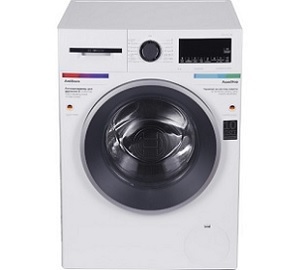
Among the additional features: foam control, smart washing, leakage protection and control lock.
The advantages: low noise when working, well copes with very dirty things.
Of the disadvantages - the noise when spinning at high speeds, as well as often have to change the belt. But this is relevant to all washing machines with motors of high power.
Electrolux PerfectCare 600 EW6S4R06W.
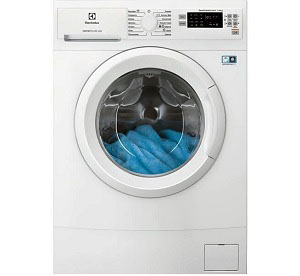
There is a smart control of washing, balance control, stepless spin speed control (underdrive drum speeds are also supported).
Of the disadvantages: on the body quickly appear scratches. Apparently, "environmentally friendly" materials were used for painting. Therefore, such equipment must be handled with care.
Weissgauff WM 40275 TD
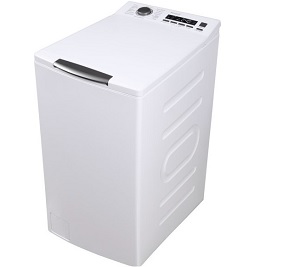
The advantage is durability. If you believe the reviews, during 5 years of active operation, only 3% of cases required service maintenance. And in most cases it is replacement of the belt or repair of the upper door.
From the disadvantages - a lot of noise when working.
To sum up, when choosing a washing machine, it is recommended to be guided by the consumer's own needs. That is, consider the available programs.
Also in advance it is necessary to calculate the required dimensions. Now the standard is 4.5 - 5.2 kilograms.
Front ones are more preferable, but vertical ones are suitable for those premises where it is important to keep every available square meter of space free.
Useful video
On how to choose a washing machine from the many options presented in stores, see the video:



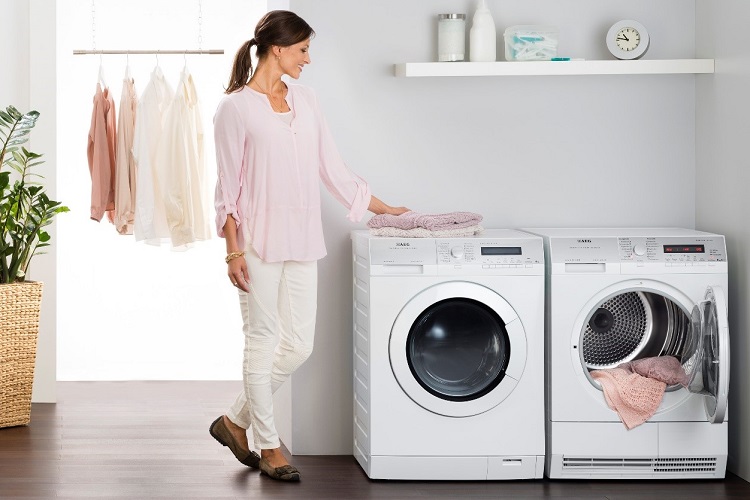
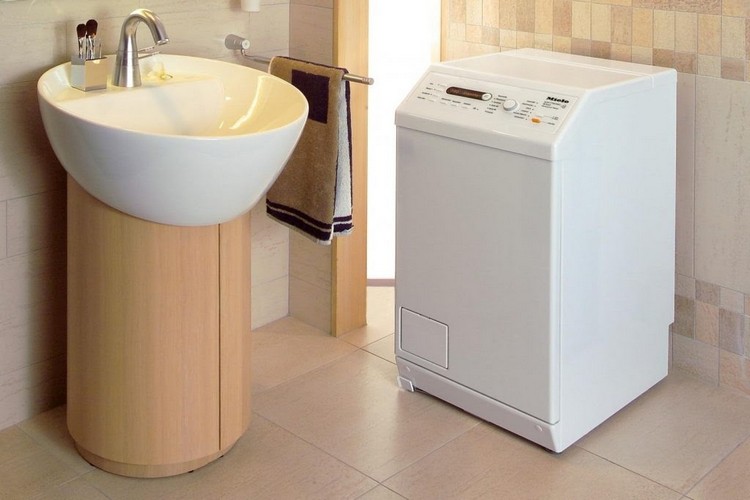
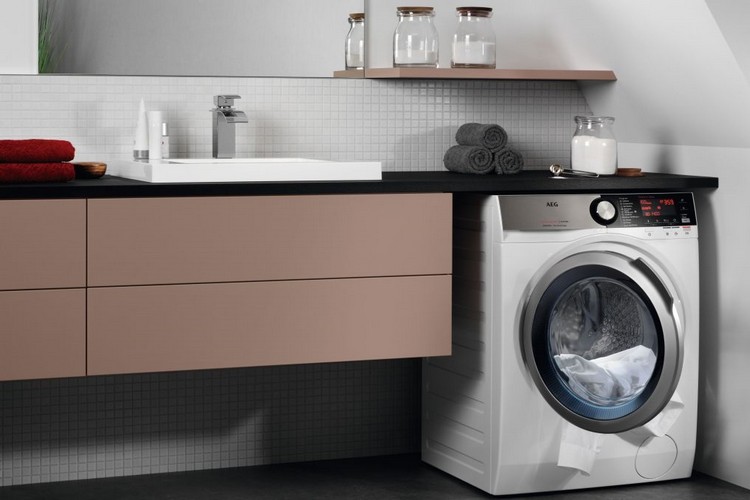
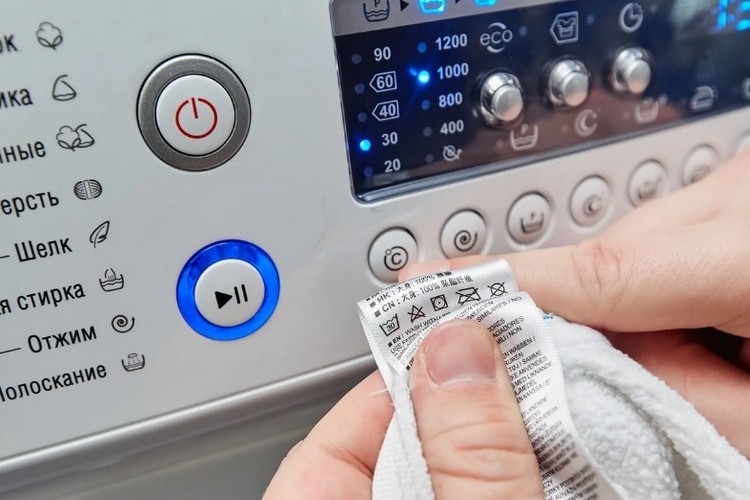
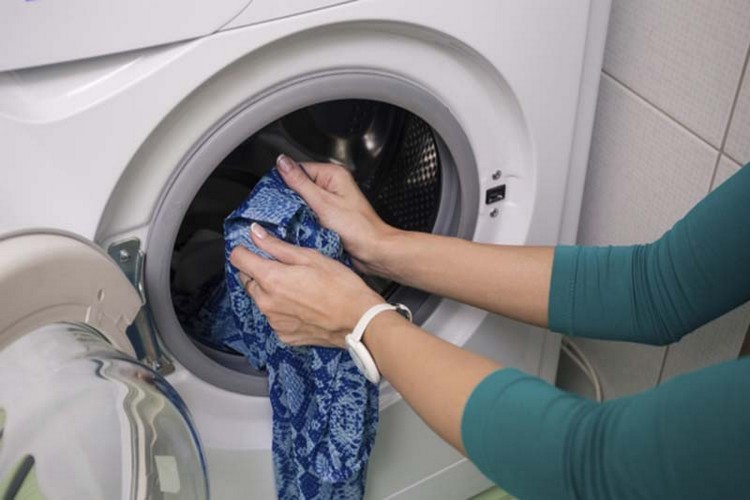

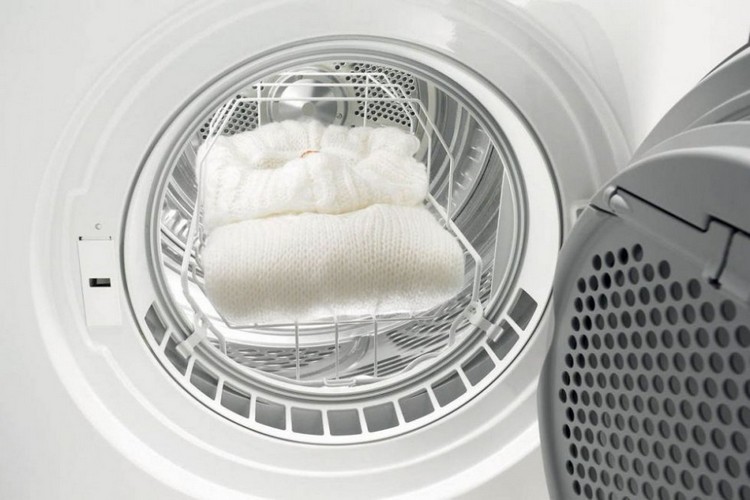
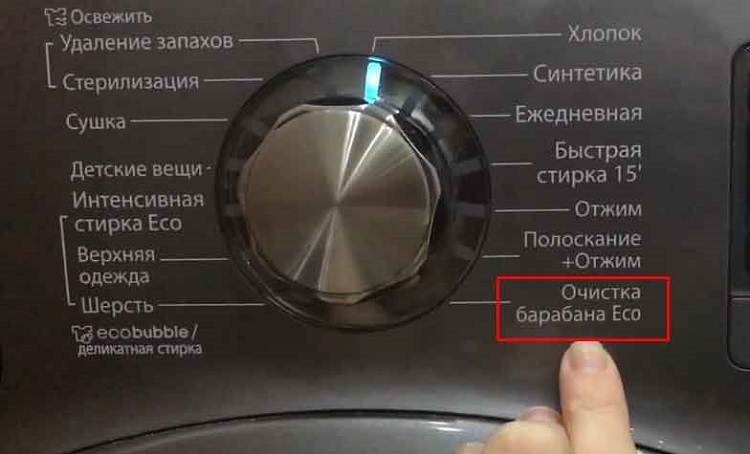

Everyone praises their machines, and I want to write about my helper. For a long time I had a Belka machine. The old model without any frills. I squeezed it by hand, poured water in a bucket and never agreed to replace it. But it broke, they said it can't be fixed anymore - it's old, even there are no spare parts for it. And my son put me a new one - Bosch WLL 2426 S. And why did I suffer for many years? As they say, what God does not do all for the better. The machine does everything for me. And washes and wrings out. A little has not yet figured out the different programs of washing. But that's okay, I'll learn. I'm 75 years old, long retired. You know, life's gotten better. There are so many innovations appear. How they make life easier for women!
The machine with a vertical load we had to choose because of the need. In our small apartment bathroom is even smaller than in khrushchevka. And in the partition between the bathroom and the wall could only fit such a machine. It took me a long time to get used to it, before there were usual front-loading ones. Now I can say that I like it better than the usual.
When we bought a hotpony, the first thing we paid attention to was the depth of the drum (after all, in a family where there are children, laundry is almost the main activity), and the number of useful programs. To summarize, I would say that we did not make a mistake with the choice.